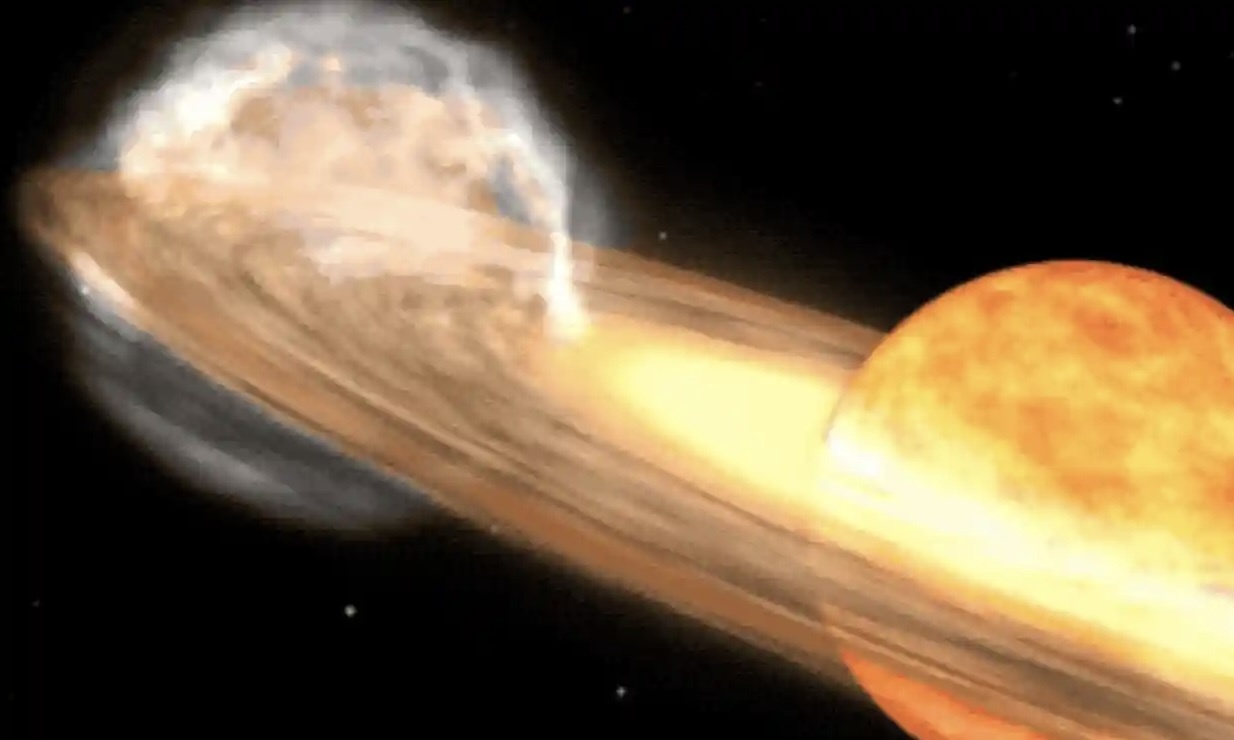10.04.2024
Huge gravity of these dense stars, which have burned all their own fuel, rips apart smaller planetary bodies

It’s the end of the world, not quite as we know it.
Scientists from the University of Warwick and other universities have studied the impact white dwarfs – end-of-state stars that have burned all their fuel – have on planetary systems such as our own solar system.
When asteroids, moons and planets get close to a white dwarf, the latter’s huge gravity rips them into smaller and smaller pieces, which continue to collide, eventually being ground to dust.
While the researchers said Earth would probably be swallowed by our host star, the sun, before it becomes a white dwarf, the rest of our solar system, including asteroids between Mars and Jupiter, as well as moons of Jupiter, ultimately may be shredded by the sun in a white star form.
Dr Amornrat Aungwerojwit of Naresuan University in Thailand, who led the study, said: “Previous research had shown that when asteroids, moons and planets get close to white dwarfs, the huge gravity of these stars rips these small planetary bodies into smaller and smaller pieces.”
Collisions between these pieces eventually grind them into dust, which finally falls into the white dwarf, enabling researchers to determine what type of material the original planetary bodies were made from.
Prof Boris Gaensicke, from the department of physics at the University of Warwick, said: “The simple fact that we can detect the debris of asteroids, maybe moons or even planets whizzing around a white dwarf every couple of hours is quite mind-blowing, but our study shows that the behaviour of these systems can evolve rapidly, in a matter of a few years.
“While we think we are on the right path in our studies, the fate of these systems is far more complex than we could have ever imagined.”
For the new research, scientists investigated changes in brightness of stars for 17 years, shedding light on how these bodies are disrupted. They focused on three different white dwarfs, which all behaved very differently.
The first white dwarf studied – known as ZTF J0328-1219 – appeared steady and “well-behaved” over the last few years, but the authors found evidence for a major catastrophic event around 2010.
Another star – known as ZTF J0923+4236 – was shown to dim irregularly every couple of months, and shows chaotic variability on timescales of minutes during these fainter states, before brightening again.
The third white dwarf analysed – WD 1145+017 – had been shown by Massachusetts Institute of Technology (MIT) in 2015 to behave close to theoretical predictions, with vast variations in numbers, shapes and depths of transits. Surprisingly in this latest study, the transits are now totally gone.
“The system is, overall, very gently getting brighter, as the dust produced by catastrophic collisions around 2015 disperses,” said Gaensicke. “The unpredictable nature of these transits can drive astronomers crazy – one minute they are there, the next they are gone. And this points to the chaotic environment they are in.”
When asked about the fate of our own solar system, Gaensicke, said: “The sad news is that the Earth will probably just be swallowed up by an expanding sun, before it becomes a white dwarf.
“For the rest of the solar system, some of the asteroids located between Mars and Jupiter, and maybe some of the moons of Jupiter may get dislodged and travel close enough to the eventual white dwarf to undergo the shredding process we have investigated.”
This study is published in the journal Monthly Notices of the Royal Astronomical Society (MNRAS).
Quelle: The Guardian

